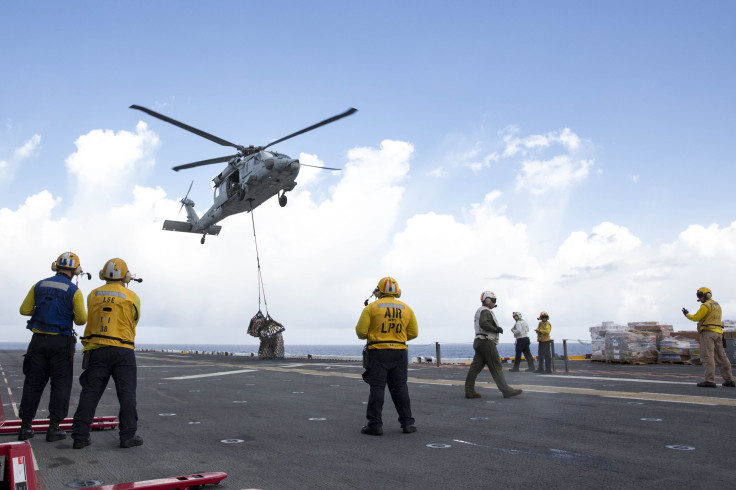Navy Stops Search For 3 Missing Sailors From C-2A Greyhound Crash

The U.S. Navy has decided to cease the search for three of its 11 members who were aboard a C-2A Greyhound, a U.S. Navy aircraft which crashed into the ocean just southeast of Okinawa, a Japanese prefecture comprising more than 150 islands in the East China Sea between Taiwan and Japan's mainland.
The incident took place Wednesday at 2:45 p.m. local time (12:45 a.m. EST), as was reported by the U.S. Seventh Fleet Official website. Initial reports by the website suggested that rescue operations were underway immediately after the incident occurred, however, according to the latest information available from the U.S. Navy, the search and rescue operations were ceased on Nov. 24 at 10:00 a.m. local time.
BREAKING: US officials say Navy expected to suspend search for 3 missing American sailors in the next few hours more than 36 hours after plane crash in Western Pacific
— Lucas Tomlinson (@LucasFoxNews) November 23, 2017
The search and rescue operation was called off two days after the unfortunate incident.
But, apart from the three sailors, the Seventh Fleet confirmed that they were able to rescue eight of their passengers and crew members and that they remained in good condition.
The Commander of Task Force 70, Rear Adm. Marc Dalton confirmed the news in an official statement. He said: “Our thoughts and prayers are with our lost shipmates and their families. As difficult as this is, we are thankful for the rapid and effective response that led to the rescue of eight of our shipmates, and I appreciate the professionalism and dedication shown by all who participated in the search efforts.”
Reports state that the sailor's names are still being held for next of kin notification and investigations regarding the crash are also underway.
It also mentions that the search was a combined effort of USS Ronald Reagen (CBN 76) and the Japan Maritime Self-Defense Force (JMSDF). The operation which continued for two days used eight U.S. Navy and JMSDF ships along with three helicopter squadrons and maritime patrol aircraft, covering nearly 1000 square nautical miles in the search for the missing sailors.
The U.S. Navy Seventh Fleet website also provided names of all the ships and aircraft that were used during the operation. Check out their names here.
The aircraft that crashed Wednesday was en-route to the U.S. Navy aircraft carrier USS Ronald Reagan (CVN 76) which is currently operating in the Philippine Sea, located in the western part of the North Pacific Ocean.
The crash was one among the string of deadly accidents that took place this year. In June, the U.S. Navy destroyer, Fitzgerald collided with a Philippine container ship just south of Tokyo. In that incident, seven members were reported killed including the commanding officer, Cmdr. Bryce Benson.
A similar incident occurred in August when 10 sailors were killed after destroyer John S. McCain collided with an oil tanker near Singapore after which two top officers of the destroyer were relieved from their duty, The New York Times had reported.
Reports in the New York Times also stated that Vice Adm. Joseph P. Aucoin, the head of the Seventh Fleet was removed from his post following the accident. An investigation was also carried out by the U.S. Navy which determined that the collisions had been a result of some basic errors which were “avoidable”.
© Copyright IBTimes 2024. All rights reserved.












